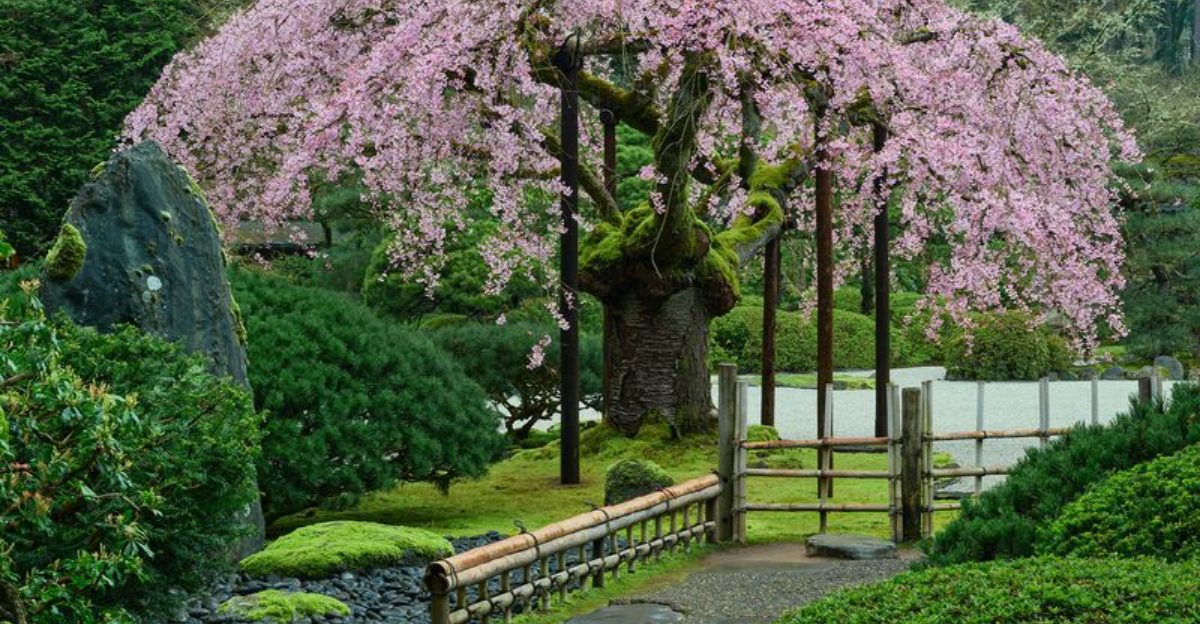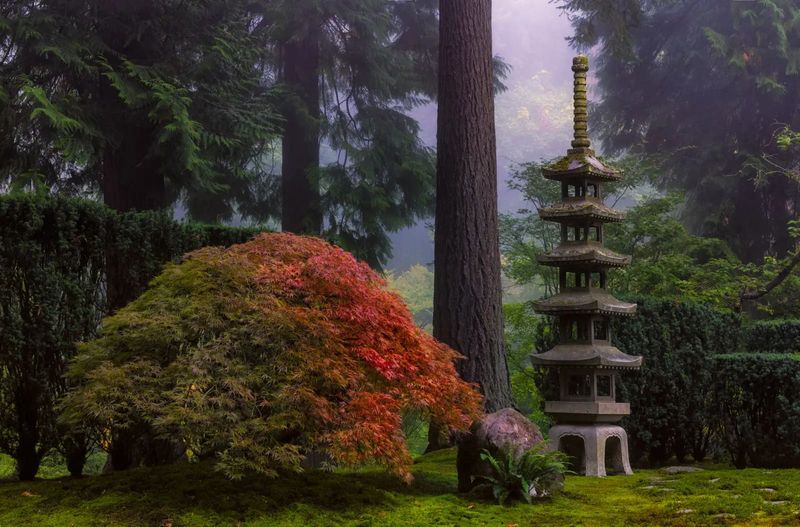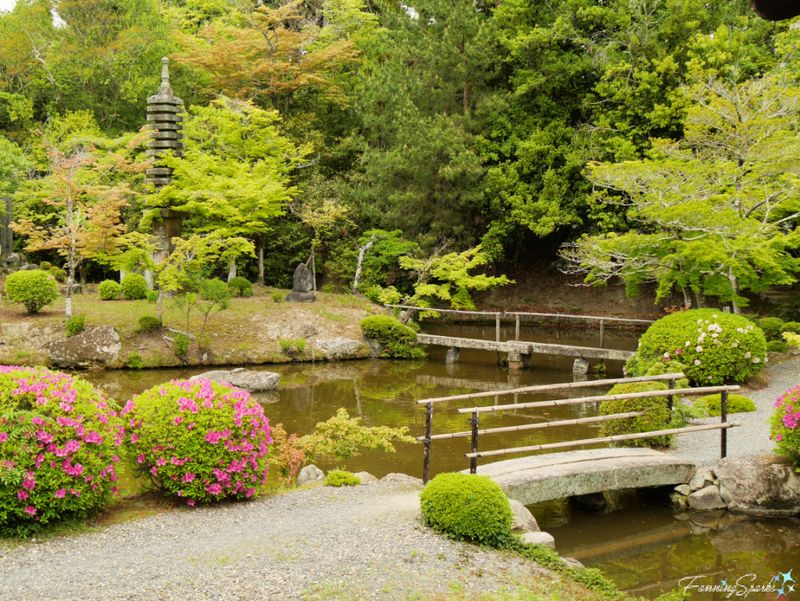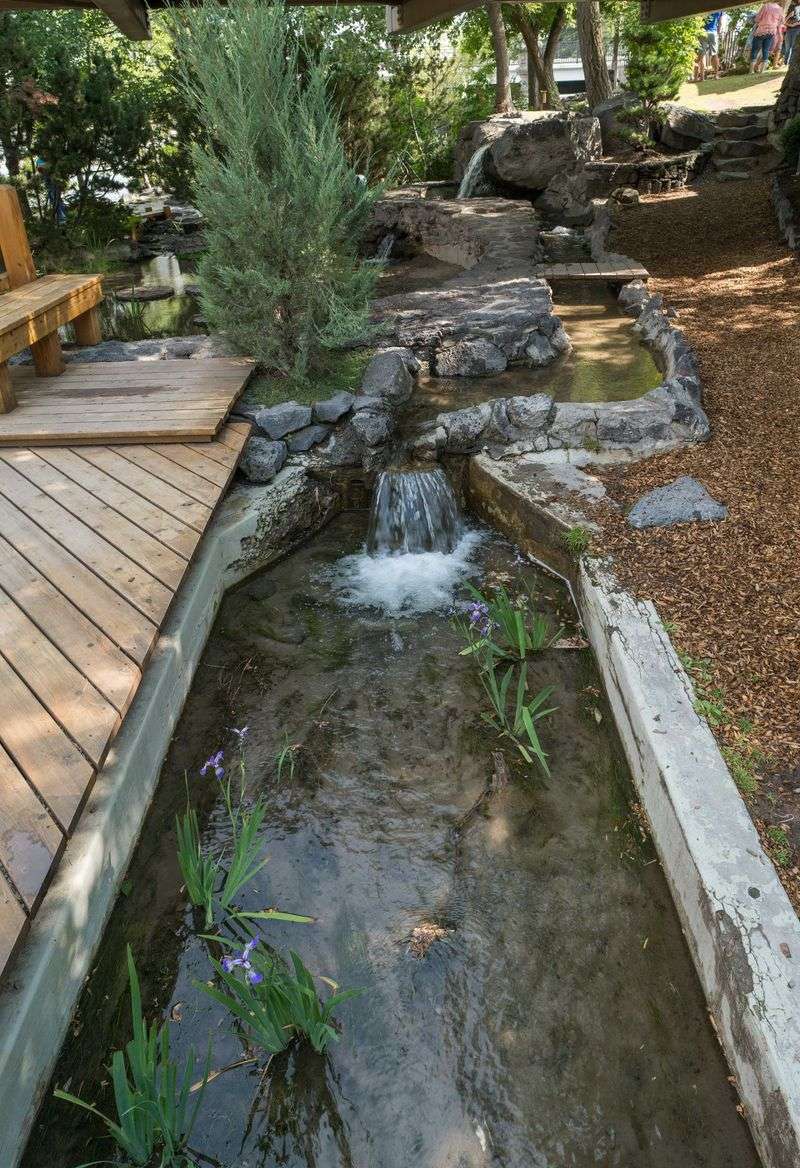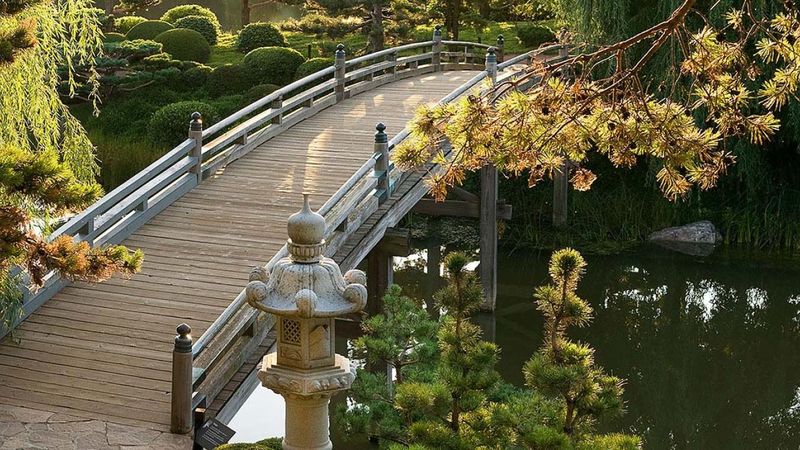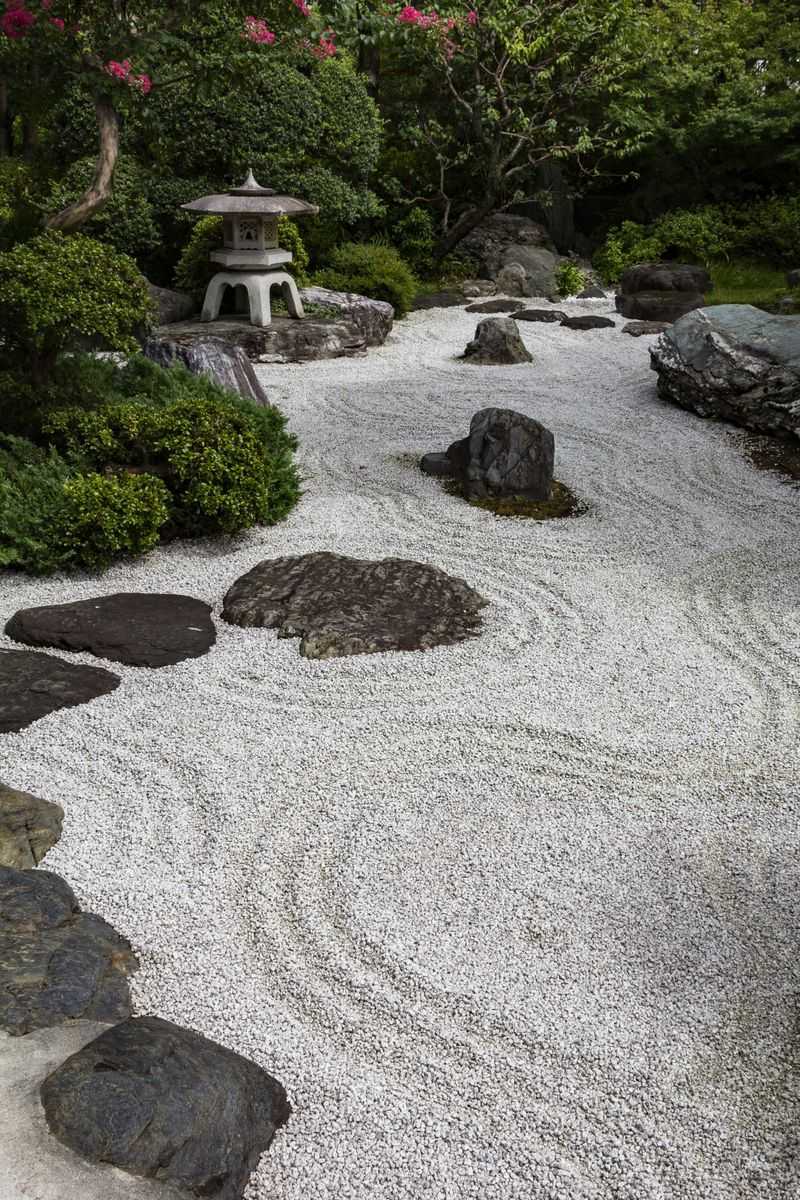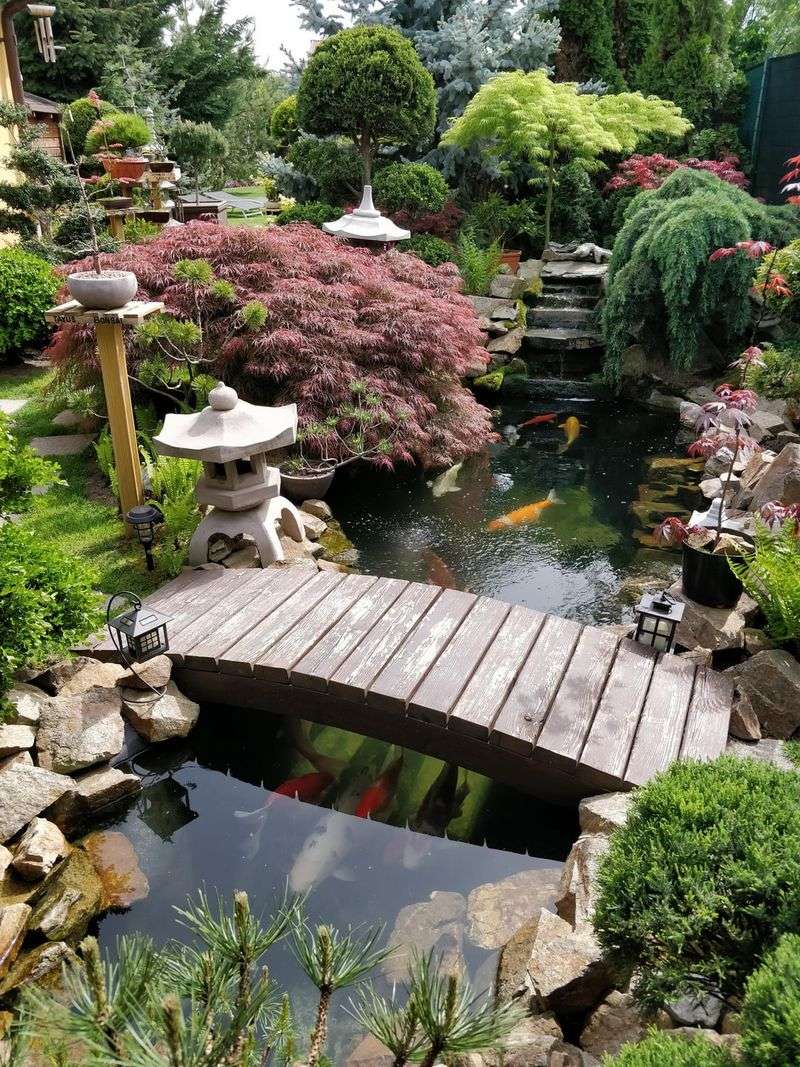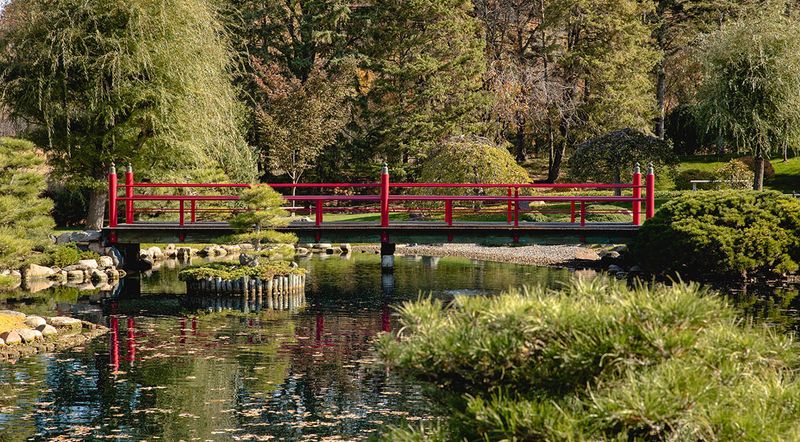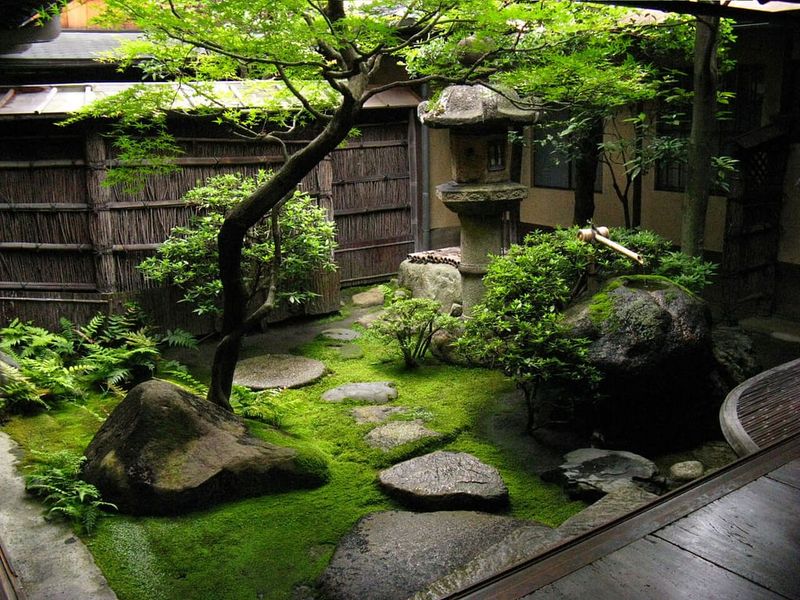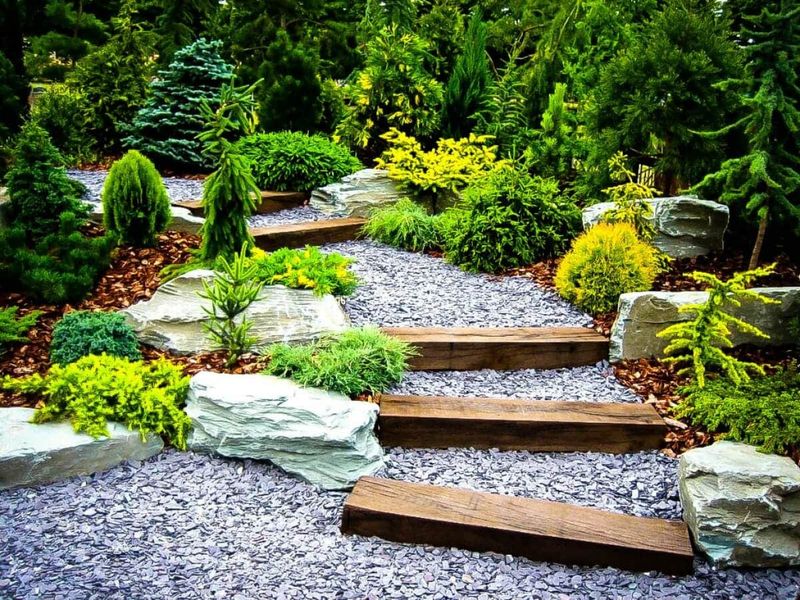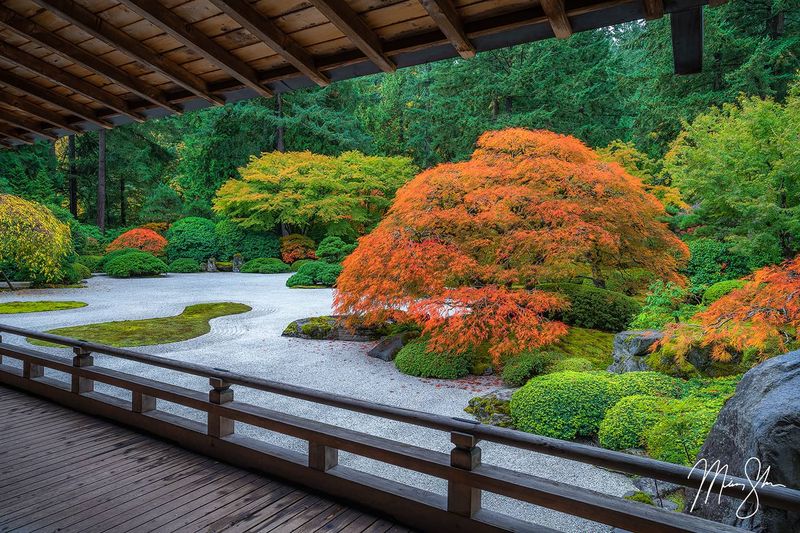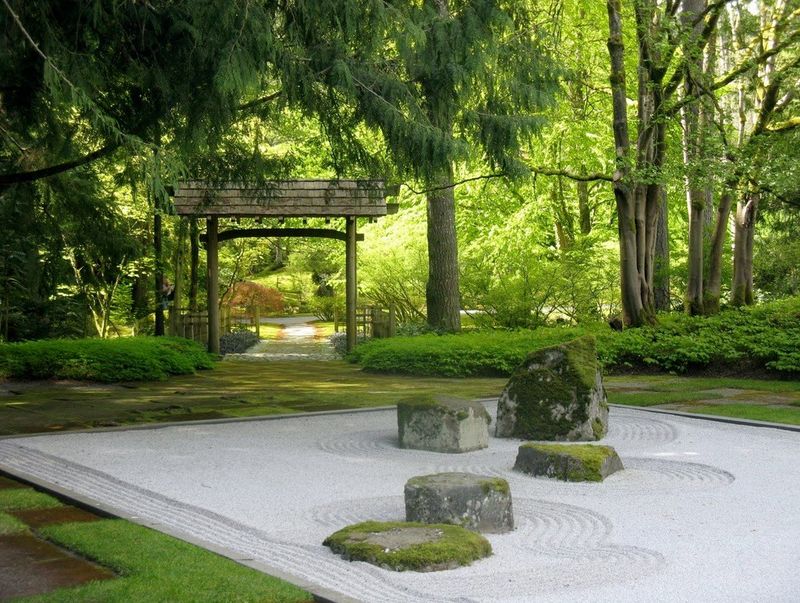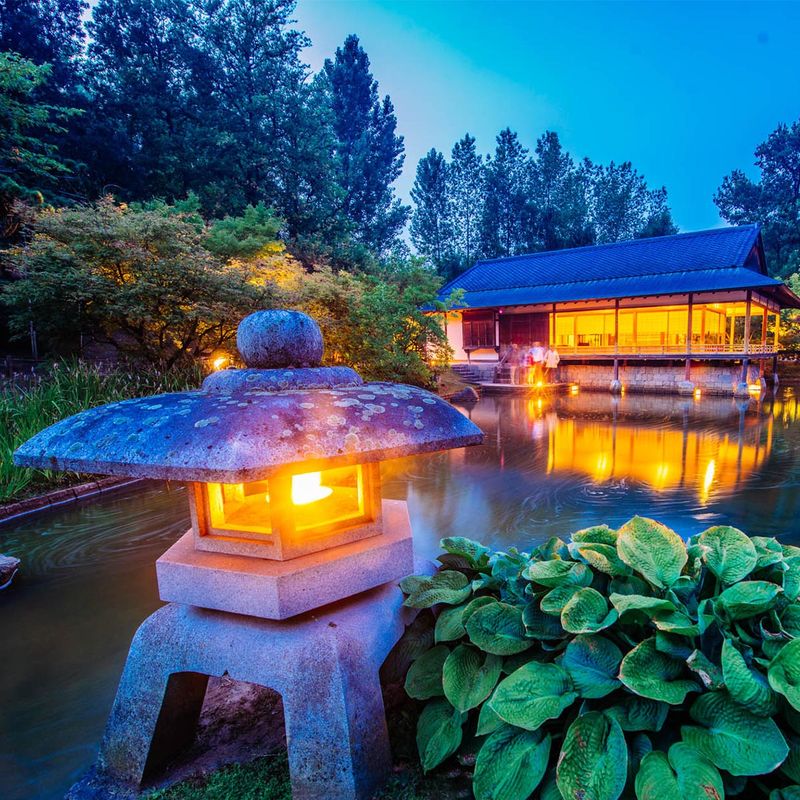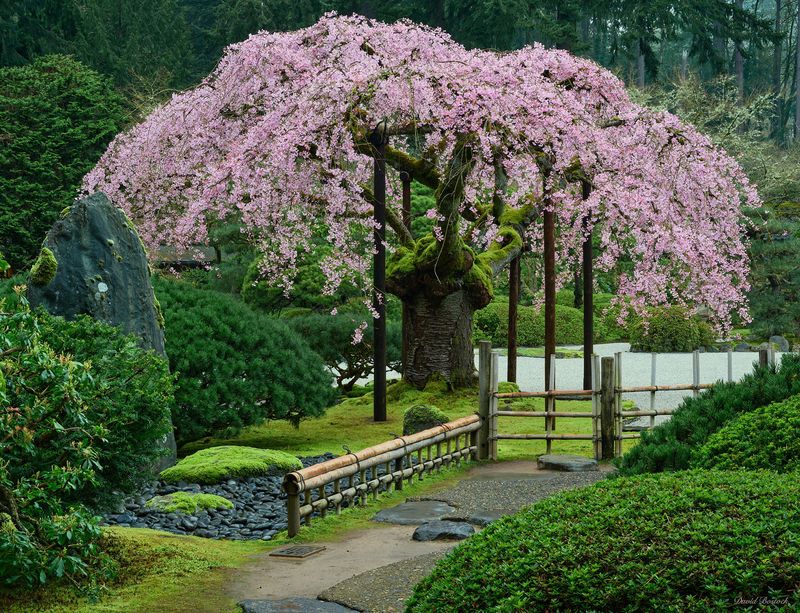Japanese gardens are renowned for their unparalleled beauty, tranquility, and deep cultural significance.
Unlike the typical American backyard, which often prioritizes functionality and modern trends, Japanese gardens offer a harmonious blend of nature, art, and philosophy.
This blog post will explore the unique features that make Japanese gardens an exceptional choice for those seeking a serene and meaningful outdoor space.
1. Harmony with Nature
In a Japanese garden, the natural landscape is not just a backdrop but an integral part of the design itself. These gardens are crafted to enhance the inherent beauty of their surroundings, creating a seamless flow that evokes peace and tranquility.
Unlike many American backyards, which often focus on maximizing usable space, Japanese gardens prioritize harmony. They achieve this through the strategic placement of elements like rocks, water, and plants, each chosen to complement the surrounding environment.
This thoughtful integration allows visitors to feel a deep connection with nature, promoting calmness and relaxation.
2. Minimalist Beauty
Japanese gardens are famous for their minimalist aesthetic, where less truly becomes more. The use of simplicity and negative space creates an atmosphere of calm and contemplation.
Each element is deliberately placed to balance the overall design, ensuring nothing feels overcrowded or chaotic. In contrast, American backyards might be filled with furniture, play structures, and various ornamental plants, leading to a more cluttered appearance.
The minimalist approach in Japanese gardens not only enhances visual appeal but also encourages mindfulness and focus, inviting visitors to appreciate the beauty of simplicity and balance.
3. Symbolism and Thoughtfulness
Every element in a Japanese garden carries symbolic meaning, reflecting a deep connection to culture and philosophy. Stones, for example, might represent mountains, while water symbolizes life and renewal.
This thoughtful incorporation of symbolism invites reflection and a deeper appreciation of nature’s cycles. In contrast, American backyards are often designed with recreation in mind, focusing on play areas or entertainment spaces.
Japanese gardens, however, offer a place for contemplation and introspection, where each rock or plant tells a story. This allows visitors to engage with the garden on a more profound, personal level.
4. Seasonal Appreciation
Japanese gardens are designed to celebrate the changing seasons, showcasing the beauty of nature’s transitions. In spring, cherry blossoms paint the landscape with delicate pink hues, while fall brings vibrant reds and oranges from maple trees.
This seasonal appreciation invites visitors to enjoy the garden year-round, witnessing nature’s cycles firsthand. American backyards, by contrast, often require replanting to maintain beauty, as they may not naturally incorporate seasonal changes.
Japanese gardens, however, are a constant reminder of nature’s ever-changing beauty, encouraging mindfulness and a deeper connection to the world around us.
5. Mastery of Space
Even the smallest Japanese gardens can give the illusion of vastness through skillful design. By using techniques like layering and perspective, these gardens make the most of limited space, creating a sense of openness and freedom.
Curved paths and strategically placed plants draw the eye, encouraging exploration and discovery. In contrast, many American backyards struggle with underutilized or wasted areas, focusing more on functional use rather than aesthetics.
Japanese gardens demonstrate that thoughtful design can maximize space beautifully, inviting visitors to wander and enjoy the serenity without feeling confined or crowded.
6. Water Features
Water is a key element in Japanese gardens, providing soothing sounds and visual interest. Features like koi ponds, waterfalls, and still pools create a soundscape that enhances relaxation and mindfulness.
These elements invite the visitor to pause and enjoy the tranquility. In comparison, American backyards might incorporate noisy fountains or artificial pools, focusing more on entertainment.
Japanese water features are thoughtfully integrated to promote peace, reflecting a deeper philosophical approach to garden design. They offer a quiet escape from the hustle of everyday life, transforming the garden into a sanctuary of calm.
7. Use of Natural Materials
Natural materials like stone, bamboo, and wood are staples in Japanese garden design, providing an organic and timeless feel. These materials blend seamlessly with the natural environment, enhancing the garden’s aesthetic and longevity.
In contrast, American backyards often feature synthetic elements like plastic furniture or concrete patios, which may clash with nature’s beauty. The use of natural materials in Japanese gardens reflects a commitment to sustainability and harmony with the earth.
This thoughtful choice not only improves the garden’s visual appeal but also ensures it ages gracefully, maintaining its beauty over time.
8. Zen and Mindfulness
Zen gardens are a hallmark of Japanese design, offering a space for contemplation and meditation. The simplicity of raked gravel and carefully placed stones encourages mindfulness and introspection.
Visitors are invited to sit and reflect, finding peace amidst the garden’s quiet beauty. American backyards, however, often focus on activity and entertainment, with spaces designed for play and socializing.
In contrast, Japanese gardens offer a sanctuary for the mind, where one can escape the noise and stress of daily life. This emphasis on mindfulness transforms the garden into a place of healing and relaxation.
9. Integration of Wildlife
Japanese gardens are designed to invite and support local wildlife, using native plants and creating natural habitats. This harmonious integration attracts birds, butterflies, and beneficial insects, enhancing the garden’s vibrancy and ecological health.
American backyards, on the other hand, often struggle with pest control and monoculture lawns, which can deter wildlife. By fostering biodiversity, Japanese gardens create a lively and dynamic ecosystem.
Visitors can enjoy the sight and sounds of nature, feeling connected to the environment. This thoughtful approach not only benefits wildlife but also enriches the garden experience.
10. Sustainability
Sustainability is at the core of Japanese garden design, with many gardens built to be low-maintenance and environmentally friendly. Techniques like rainwater collection and the use of drought-resistant plants reduce the need for excessive watering and chemical treatments.
This self-sustaining approach contrasts sharply with many American backyards, which often require high maintenance and resources. Japanese gardens reflect a deep respect for nature, promoting conservation and ecological balance.
By embracing sustainable practices, these gardens offer a model for environmentally conscious design, encouraging a more harmonious relationship with the earth.
11. Balance of Elements
Japanese gardens achieve a perfect balance between water, stone, plants, and architecture, creating a harmonious and visually striking environment. Each element is carefully considered and positioned to complement the others, ensuring that no single feature dominates.
This balance is key to the garden’s tranquil atmosphere. In contrast, American backyards might focus on one or two dominant features, such as expansive lawns or large patios, which can create a less cohesive look.
The thoughtful integration of diverse elements in a Japanese garden fosters a sense of peace and unity, making it a truly special place to unwind.
12. Pathways with Purpose
Pathways in Japanese gardens are more than just a means of getting from one place to another; they are an integral part of the experience. Winding stone paths invite exploration and encourage a mindful journey through the garden, allowing visitors to take in their surroundings slowly and thoughtfully.
In contrast, American backyards often feature straight, functional walkways that prioritize efficiency over experience. Japanese garden paths are designed to enhance the visitor’s connection to nature, fostering a deeper appreciation for the landscape.
This purposeful design transforms a simple walk into a meditative experience.
13. Cultural Heritage
Rooted in centuries-old traditions, Japanese gardens are rich in cultural heritage and significance. They embody principles of Shinto, Buddhism, and Taoism, reflecting a deep spiritual connection to nature.
This cultural depth adds layers of meaning and appreciation that go beyond mere aesthetics. Unlike American backyards, which often reflect personal preferences and contemporary trends, Japanese gardens are guided by long-established philosophies.
Visitors can explore the cultural stories embedded in the design, gaining insights into Japanese history and values. This rich cultural tapestry makes Japanese gardens not just beautiful, but also profoundly meaningful spaces.
